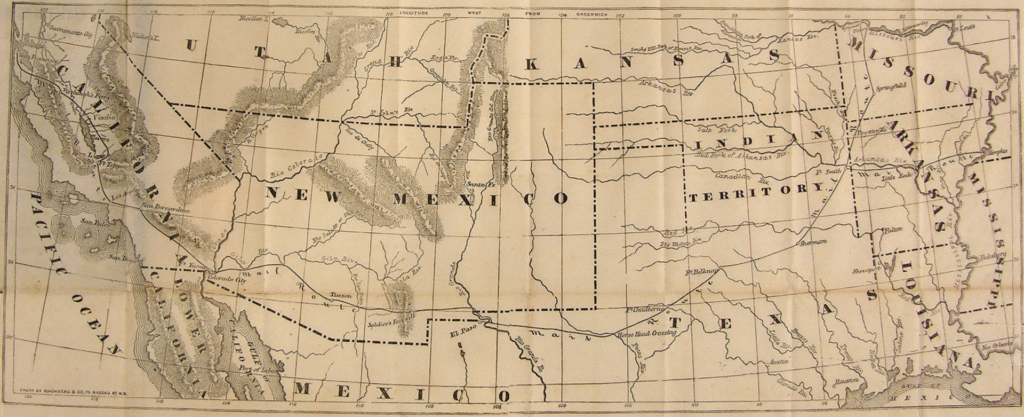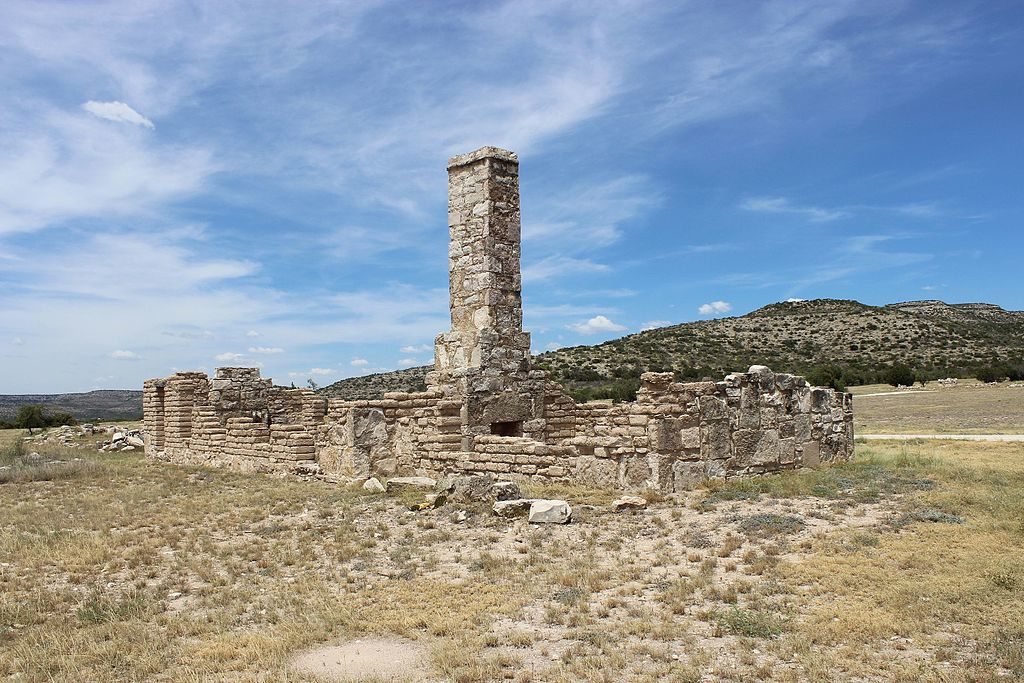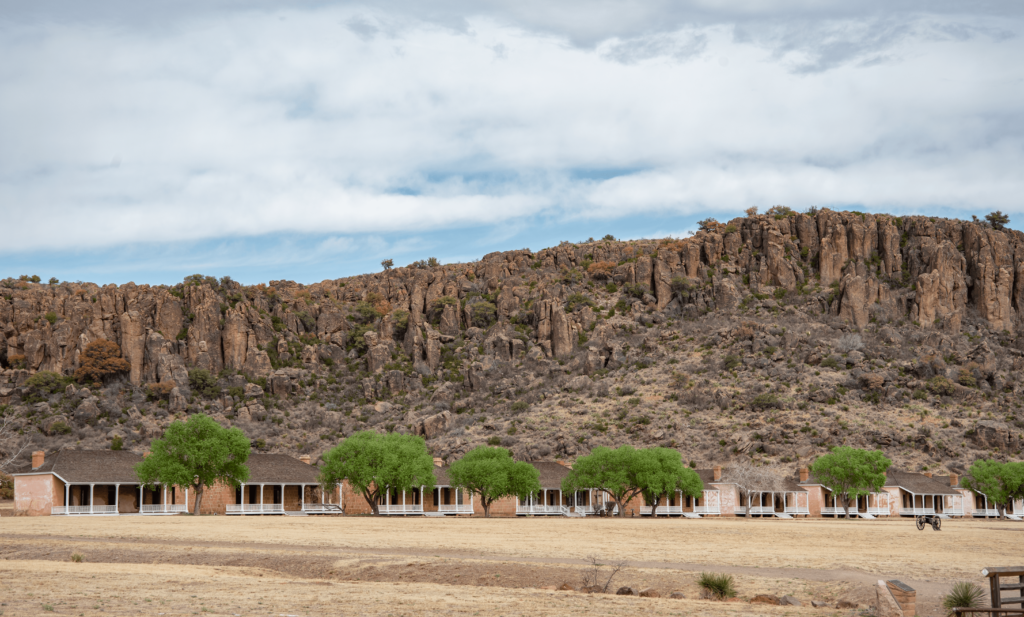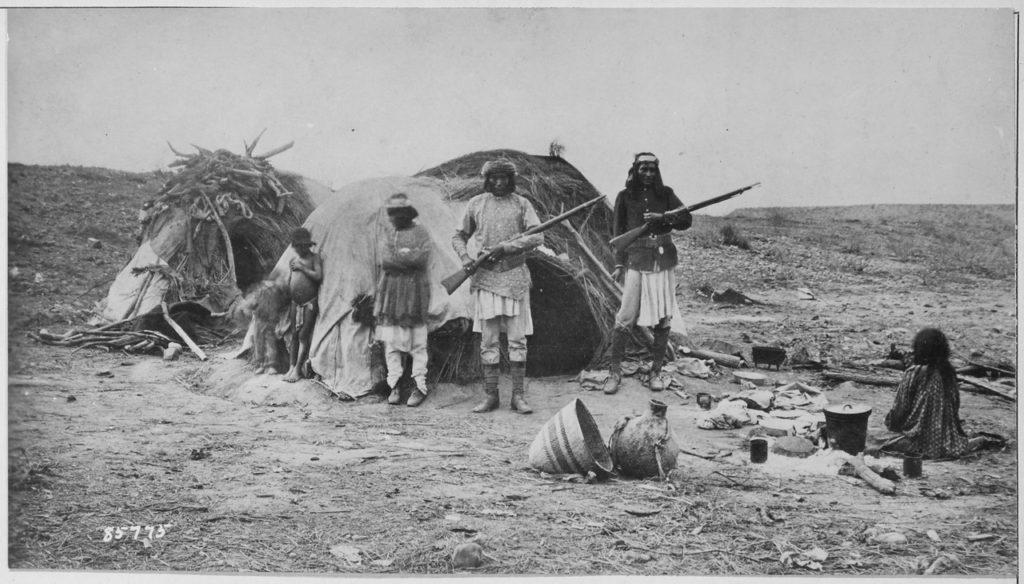Today on Beyond Bones I’m going to offer up a few potential travel destinations for those of you who like to visit little-known and seldom explored places that have awesome histories. The destinations in question are a string of ruined forts that date back to the era when West Texas was a still a lawless wilderness. The men who defended the forts were the famous Buffalo Soldiers, the first black troops to serve in the U.S. during peacetime. Their adversaries were bands of Apache, Comanche and Kiowa who rebelled against the bondage of Reservation life.

Buffalo soldiers of the 25th Infantry, some wearing buffalo robes, Ft. Keogh, Montana. Source: Wikimedia Commons.
Not only are these places beautiful, their story encapsulates the spirit of the Old West. In the classroom and in the media most of us are told the story of America’s Westward expansion during the 19th century through a single perspective: that of the white settler, but the West was a place where people of numerous ethnicities sought freedom from whatever oppressed them back home, whether that be poverty or racism or the expectations of Victorian society.
Interestingly, some of the freedom seekers who were fleeing from the harshest oppression were the soldiers who protected the settlers and the Native Americans who sometimes attacked them.
Those seeking their fortunes in the West in the mid-19th century had a limited number of routes to take them across the vast plains to their destinations. Probably the most famous route was the Oregon Trail, but it was buried in snow for part of the year. Another option was the “Lower Road” which dipped down to Texas and passed from San Antonio to El Paso before continuing through New Mexico and Arizona to California.

The road had existed for hundreds, perhaps thousands of years already when these early frontiersmen first set foot on it. Today we call it the Old Spanish Trail in honor of the Conquistadors, who were the first Europeans to traverse it. However, even before Spanish showed up the road had existed for an untold amount of time connecting Native American settlements.
The path of the Lower Road is roughly followed by US 90 and is paralleled by I-10. Travelling on the Interstate West of San Antonio you pass through territory that was once fraught with peril. The region is an extension of the Chihuahuan desert; it’s a harsh landscape with relatively little water. It was the perfect place for outlaws and renegade bands of Native Americans to hide out.
Despite these dangers, the route was chosen by the Butterfield Overland Mail Company as the first transcontinental overland mail and stage route because, unlike the the Central Overland trail, the Lower Road remained snow-free all year.

Ruins of Company K Enlisted Men’s Barracks at Fort Lancaster, c. 1857. Author: Travis K. Witt. Source: Wikimedia Commons.
To protect the mail service and the settlers traveling on the road, the Army established a series of forts at strategic points. The earliest to be established were Fort Bliss and Fort Davis in 1854, followed by Fort Lancaster and Fort Quitman in 1855 and 1858 respectively and finally Fort Stockton in 1859. The string of Forts continued West into New Mexico and Northeast all the way up into Arkansas, but it’s the West Texas Forts that we’ll be focusing on in this blog.
The forts were briefly active until Texas seceded from the union in 1861 at which point they were abandoned. After the war they were garrisoned and rebuilt by the newly formed Buffalo Soldiers, which included the 9th and 10th Calvary Regiments and 24th and 25th Infantry Regiments. When they first marched into Texas they hadn’t earned their nickname yet. That would come during the ensuing Indian Wars. Nobody’s quite sure how they came to be called Buffalo Soldiers, but most sources agree that it was given to them by their Native American adversaries (exactly which group of Native Americans it was is not known for sure).
Fort Davis was the center of activity for the Buffalo Soldiers and today it is the best preserved (not to mention most beautifully situated) frontier fort in Texas. The Fort is named after Jefferson Davis, who was the U.S.’s Secretary of War when the fort was first established in 1848. Later, of course, Davis broke up with America and became the president of the Confederacy. For some reason the fort continued to bear his name even after the Civil War.

The duties of the soldiers stationed at frontier forts such as Fort Davis consisted mostly of monotonous manual labor. The soldiers maintained the mail route, ran telegraph lines, dug wells and performed a variety of other laborious tasks. They were also charged with escorting the mail and groups of settlers along the perilous road between Sand Antonio and El Paso and patrolling thousands of miles of open territory in search of hostile bands of Native Americans.
After the Civil War, tensions between Native Americans and settlers were increasing as the frontier became ever smaller. Cattle trains led by ranchers such as Goodnight and Loving were skirting the borders of the Comancheria, Texas’ Indian Territory, populated by a number of Native American groups including the Apache and Comanche. The presence of these groups was viewed as a burden on Texas’ burgeoning agricultural trade.
In the 1870’s the government began forcing Forcing Native American groups from the region onto reservations, but some factions resisted Reservation life and escaped to the vast untamed wilderness along the Texas-Mexico border. Occasionally they would raid settlements and attack travelers on the road.

Apache warriors and dwellings, called wikiups. Source: Wikimedia Commons.
There are many stories of bands of warriors going up against the Buffalo Soldiers, but the most epic was an 1867 incident at Fort Lancaster in which 40 soldiers of the 9th Calvary defended the fort against an army of 400 Kickapoo warriors. Fort Lancaster remains the only U.S. Army fort to be attacked by Native Americans. The Buffalo Soldiers were also involved in Victorio’s War, a series of skirmishes spanning 1879 and 1881 between U.S. forces and a band of Apache lead by Cheif Victorio.
Today you can visit the remains of all of the forts that protected the old mail route, but the most easily accessible are those along I-10. Traveling West from San Antonio, Fort Lancaster is about three hours out, followed about an hour later by Fort Stockton. Getting to Fort Davis requires a detour of about 2 hours from I-10, but it’s well worth the trip. And finally there’s Fort Bliss in El Paso. Next time you’re headed West, maybe to Big Bend or New Mexico, you should definitely check out these fascinating little pieces of Texas history.
And if you don’t have time to drive all the way out to West Texas, consider visiting the Houston Museum of Natural Science. We have all sorts of fascinating historical exhibits including the special exhibit Art of the Gunsmith, the Hall of the Americas and the Hall of Ancient Egypt.

